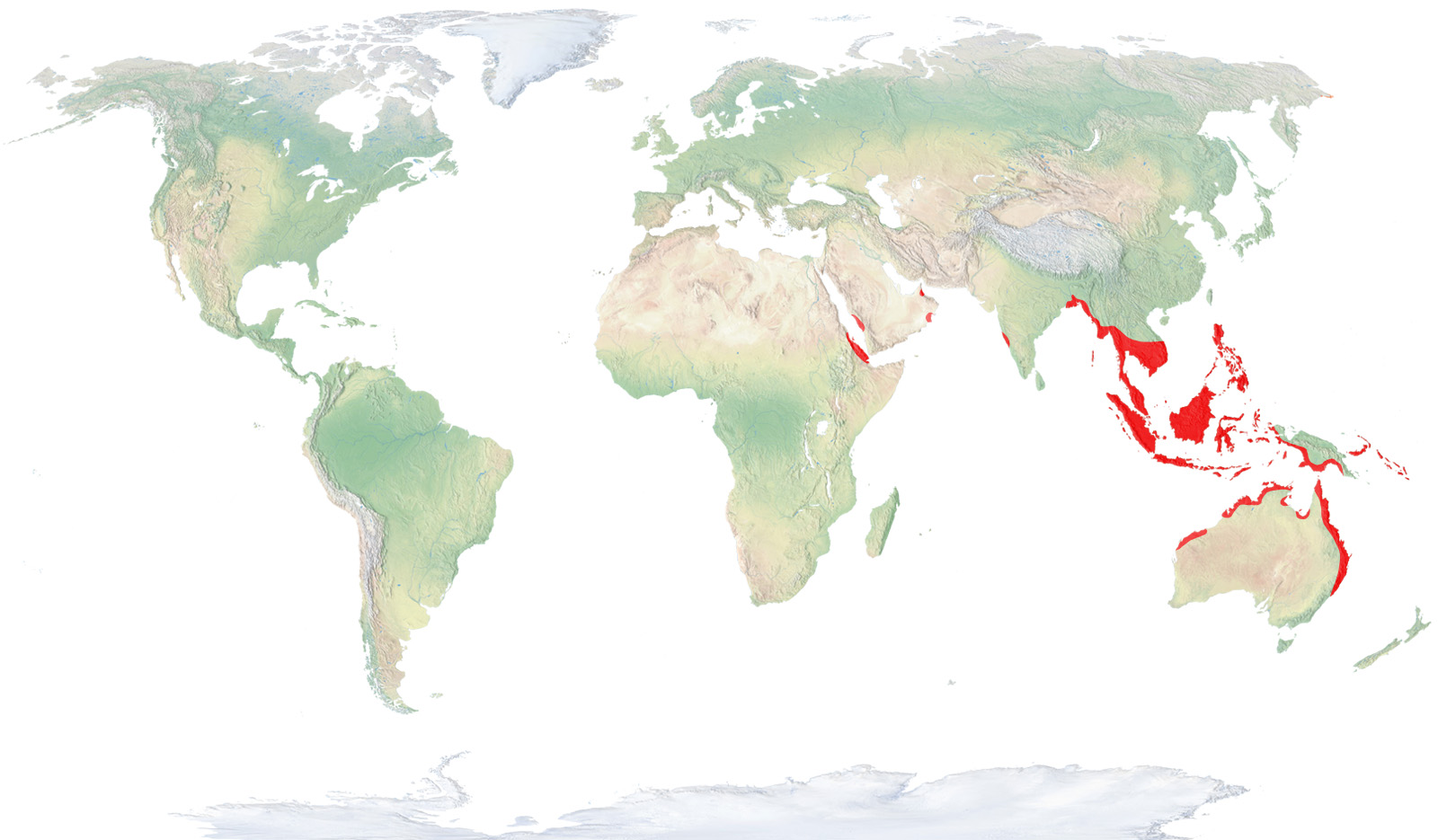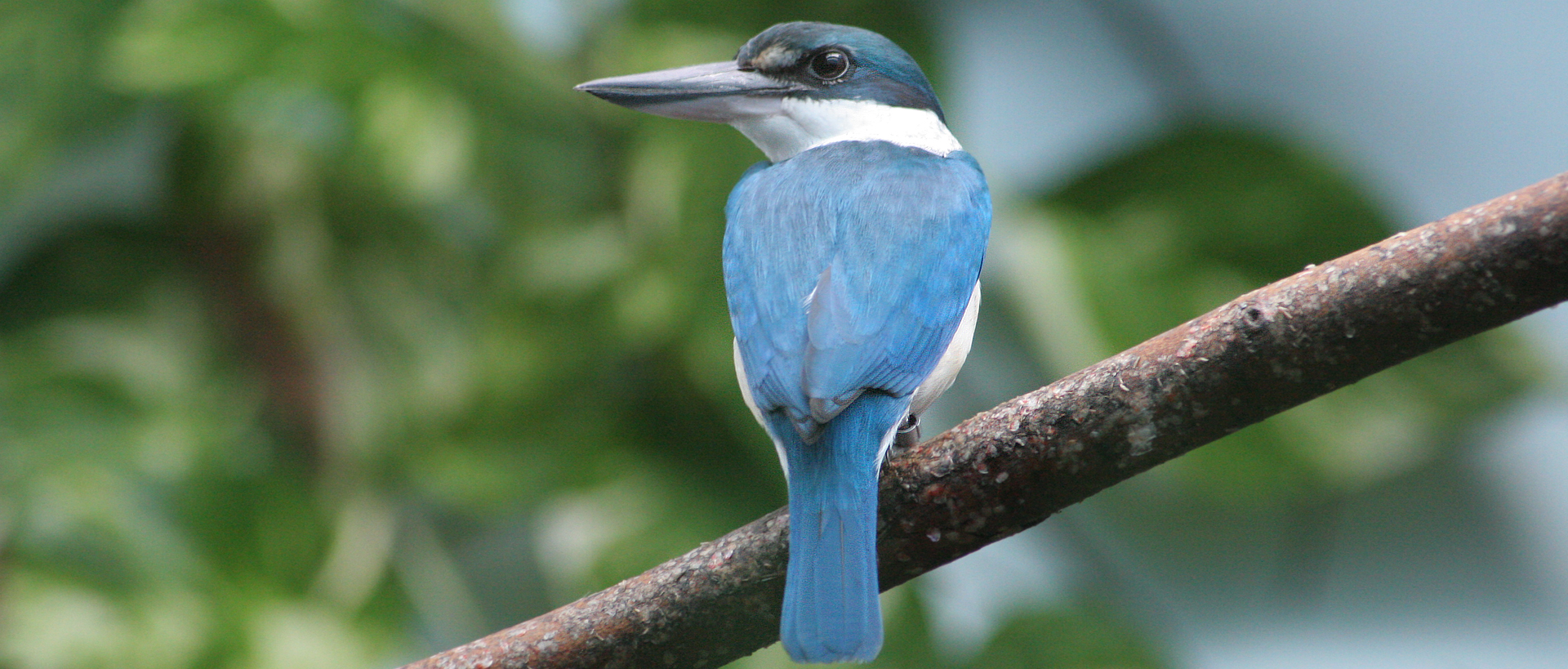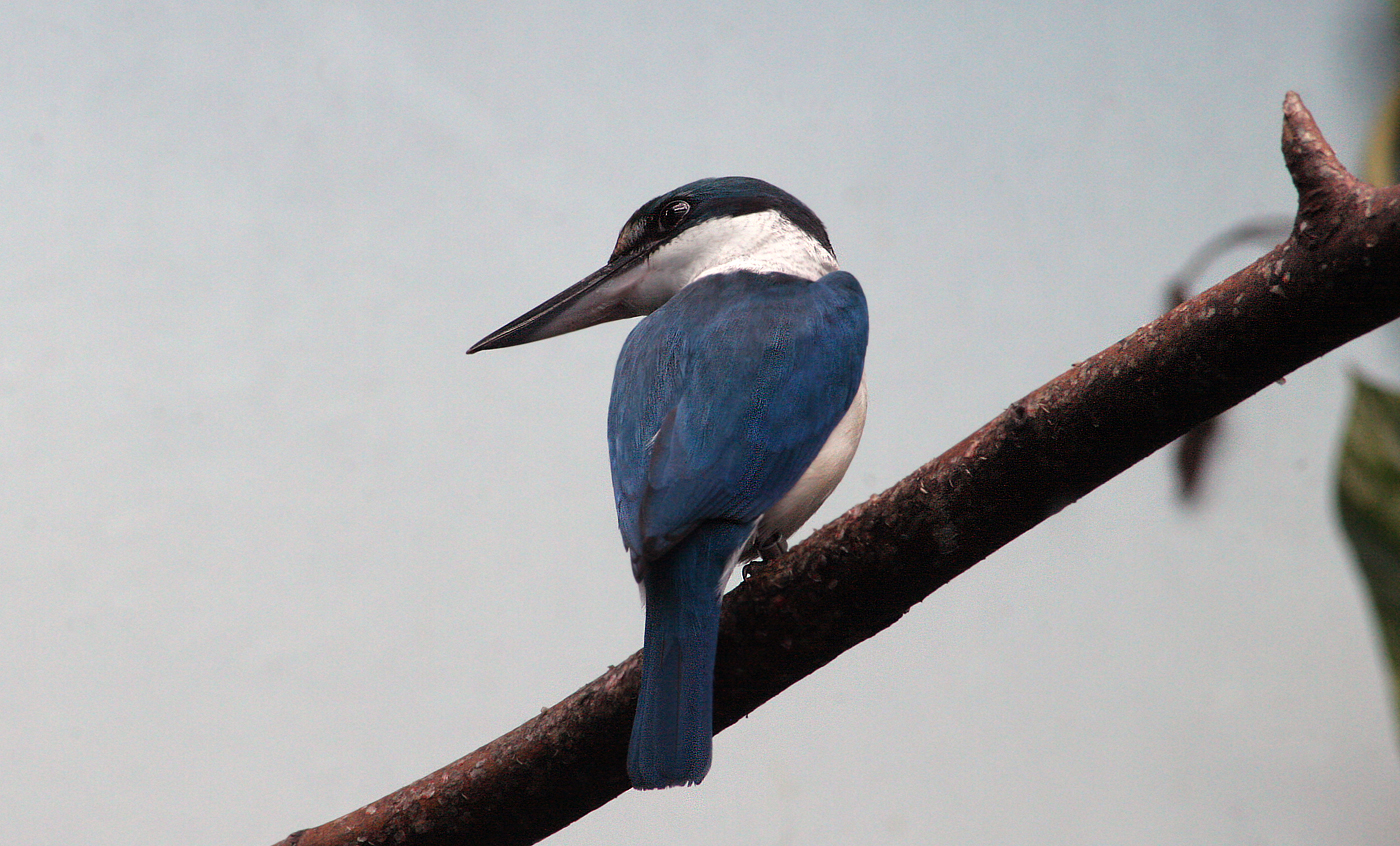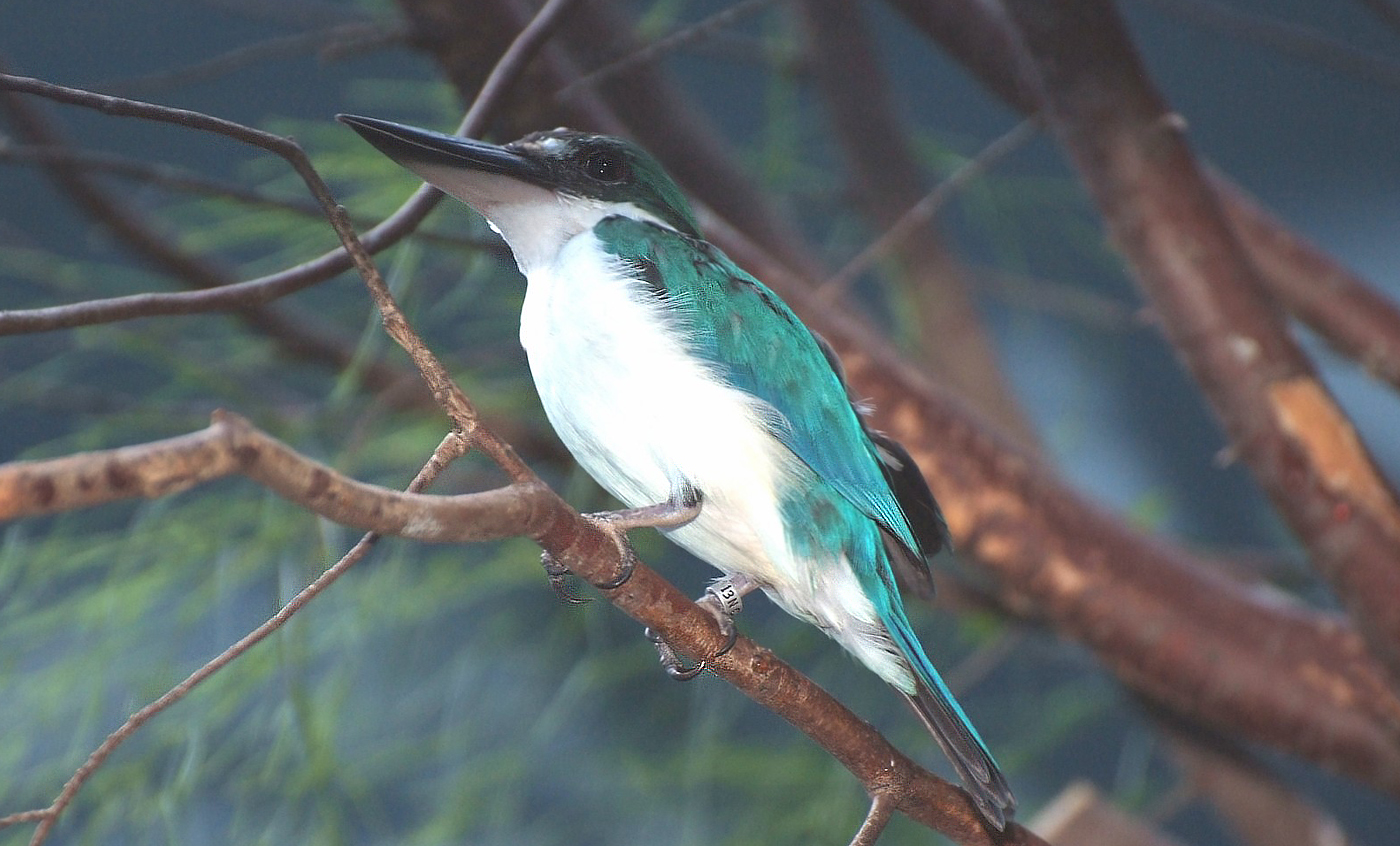White-collared kingfisher
This colourful forest bird prefers to live in coastal areas, particularly mangrove swamps but also in more open habitats. Although it can catch fish like its closest relative, the Common Kingfisher, it has a much more varied diet that includes crabs, insects, worms, snails and small vertebrates. It usually perches high up, remaining motionless in wait for its prey.
Natural habit
Different parts of eastern Africa, western India, Southeast Asia, New Guinea and northern Australia

- Distribution / Resident
- Breeding
- Wintering
- Subspecies
Risk level
- Extint
- Extint in the wild
- Critically endangered
- In Danger
- Vulnerable
- Near threatened
- Minor concern
- Insufficient data
- Not evaluated
Taxonomy
Physical characteristics
Biology
Reproduction
Biology
This kingfisher species, with very widespread distribution, has enormous physical variability, making it quite complex to find common distinctive traits among its 50 subspecies. The subspecies at the Zoo is the symbolic one, characterised by its long powerful black beak with a yellowish base, its white face, chest and belly, green crown and dorsal, and blue wings and tail. It has a lavish black mask that finishes at the nape. This kingfisher receives its name from the white collar-like ring around its neck.
This bird selects aquatic environments around its area of distribution, with a clear preference for mangroves and flooded forests along the coastlines of Southeast Asia, Indonesia, the Philippines, New Guinea and northern Australia.
The populations closest to coastal areas primarily feed on crabs, crustaceans, molluscs and small fish they capture with their enormous powerful beak. As populations get further from the sea, their dietary range varies and even includes small reptiles, mammals and amphibians, while consisting mainly of insects and invertebrates.
Due to the variety of environments it occupies, with changing climates and microclimates, the breeding period cannot be defined equally for all populations and subpopulations. Nests can even have different substrates and be made differently depending on the area where it is. It can end up using termite mounds and sandbanks to dig the nest or take advantage of holes in rotten or fallen trees, always employing a hole made by another species. Indeed, over half of this species’ nests are located in termite mounds, generally those built using a tree for support. Females lay between two and five eggs in the nests, although the most common number is three, which both members of the couple incubate for 29 or 30 days.
Resident and sedentary, although they scatter and are nomadic in some points of their area of distribution.
It is a common bird that is not endangered in the majority of its area of distribution. While quite common in the mangroves of the Indonesia, the Philippines and Southeast Asia, in northern Australia they are rarer and less abundant. In many parts of their distribution area they are diminishing due to loss of habitat and the degradation of coastal lands.





